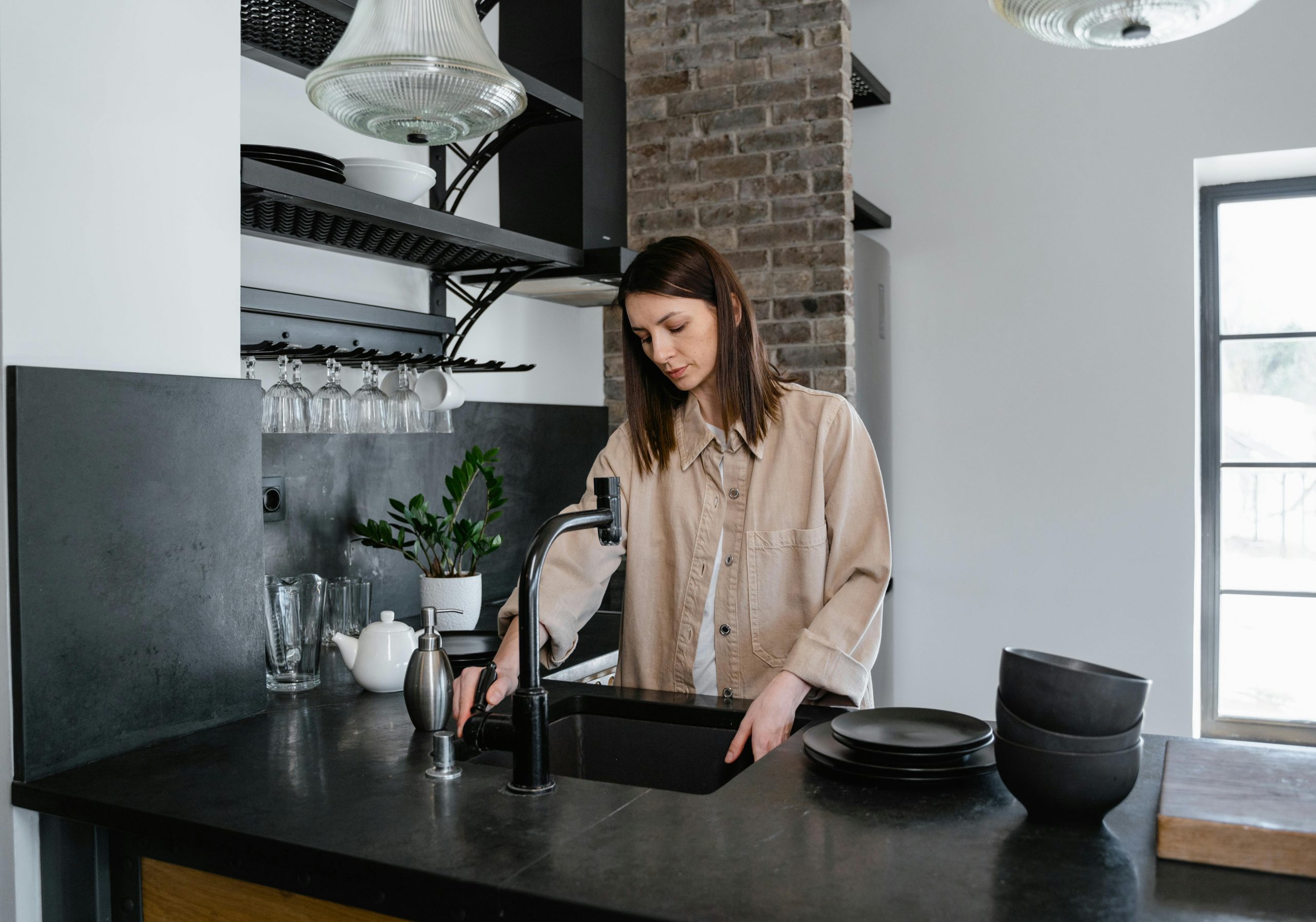
A garbage disposal is one of the most useful appliances in any kitchen. It helps manage food waste quickly and efficiently, cutting down on trash and keeping your sink cleaner. But like any other household appliance, it can stop working unexpectedly—and when it does, it can be frustrating. Whether your garbage disposal isn’t turning on, only makes a humming noise, smells bad, or drains slowly, there are several possible causes. The good news is that many of these issues can be fixed easily without needing to call a plumber. With a little guidance, you can learn how to troubleshoot and resolve common garbage disposal problems safely and effectively. In many cases, all it takes is resetting the unit, removing a clog, or clearing a jam to get it running again. However, it’s also important to know when the problem is more serious and professional help is required.
In this article, you’ll learn what might be causing your garbage disposal to stop working, how to fix it step-by-step, and when it’s time to replace the unit or bring in a pro. By the end, you’ll be better prepared to handle garbage disposal issues confidently and keep your kitchen running smoothly.
Common Reasons a Garbage Disposal Stops Working
There are a few common reasons your disposal might stop working. Knowing what to look for can help you figure out the issue faster and decide whether it’s something you can fix yourself or if you’ll need professional help.
1. It Won’t Turn On at All
If your garbage disposal does absolutely nothing when you flip the switch—no sound, no movement—the problem is likely electrical. This could be caused by:
- A tripped circuit breaker: Check your home’s breaker box. If the breaker for the kitchen or disposal has flipped, reset it and try again.
- A blown internal fuse or tripped reset button: Most disposals have a reset button on the bottom of the unit. Pressing it may restore power.
- A loose or unplugged connection: Make sure the unit is securely plugged into the outlet under the sink.
2. It Hums but Doesn’t Grind
If you hear a humming noise but the blades don’t spin, something may be stuck inside the disposal. This jam can prevent the motor from turning the grinding plate. Continuing to run the disposal in this state can burn out the motor. Turn off power and check for blockages like bones, utensils, or hard food scraps.
3. It’s Clogged
If your sink is draining slowly or backing up, your garbage disposal might be clogged. This often happens when fibrous foods (like celery), grease, or too much food are stuffed down at once. Clogs can form in the disposal chamber or further down in the drainpipe, requiring a plunger or drain snake to clear.
4. It Leaks
Leaks are another common issue. Water dripping under the sink could be coming from:
- The sink flange: This is the metal ring that connects the disposal to the sink. If the seal is worn or loose, it may need tightening or resealing.
- The dishwasher connection: If the dishwasher drains through the disposal, the hose or clamp may be cracked or loose.
- The discharge pipe: This pipe connects the disposal to the drain and can develop leaks if the screws are loose or the gasket is damaged.
Safety First: Unplug Before You Fix
Important: Always unplug your garbage disposal or turn off the power at the breaker box before doing any work. Never put your hand inside the disposal.
Step-by-Step Fixes for Common Problems
Problem 1: Garbage Disposal Won’t Turn On
If your garbage disposal is completely silent and shows no signs of power, it’s likely an electrical issue. Here’s how to troubleshoot it:
- Check the power outlet: Make sure the disposal is plugged in. Unplug it and try another small appliance to test the outlet.
- Press the reset button: Look for a small red button on the bottom of the disposal unit. Press it firmly. This resets the unit if it has overheated or tripped internally.
- Check your home’s breaker box: Open your electrical panel and look for a tripped circuit breaker. Flip it off and back on if needed.
- Try the switch again: After checking everything, flip the disposal switch to see if it powers on.
If none of these steps restore power, the problem may be with the internal wiring, motor, or wall switch. At that point, it’s best to call a professional. Avoid trying to fix electrical issues without proper training, as it can be dangerous. Sometimes, an old disposal that won’t turn on at all might need to be replaced. Most units last about 10–15 years with regular use.
Problem 2: Garbage Disposal Hums but Doesn’t Work
If your garbage disposal makes a humming noise but doesn’t spin, it’s likely jammed. This is a common problem that’s usually easy to fix with a few simple tools.
What to Do:
Unplug or Turn Off Power: Always start with safety. Unplug the disposal or turn off the power at the circuit breaker to make sure it can’t turn on while you’re working on it.
Insert a Hex Wrench: Most garbage disposals come with a hex (Allen) wrench. Look underneath the disposal unit for a small hole in the center.
- Insert the wrench and gently twist it back and forth.
- This can manually rotate the flywheel inside, freeing whatever is stuck.
- Don’t force it—gentle pressure is usually enough to loosen a jam.
Use Tongs or Pliers: Shine a flashlight into the drain. If you see anything stuck (bones, utensils, fibrous foods), use tongs or pliers to remove the item.
- Never put your hand inside the disposal, even if it’s unplugged.
- Remove any visible debris carefully.
Try the Reset Button Again: After you’ve cleared the jam, locate the red reset button on the bottom of the unit.
- Press it firmly, then turn the power back on and test the switch.
- If the disposal now spins, the issue is resolved.
If the humming continues after these steps, the motor may be damaged, and you may need professional help.
Problem 3: Garbage Disposal Is Clogged
A clogged garbage disposal can cause water to drain slowly—or not at all. It might also cause water to back up into the sink. This kind of clog usually happens when food waste or grease builds up in the drainpipe. Here’s how to fix it step by step:
What to Do:
Don’t Use Drain Cleaner
- Avoid pouring chemical drain cleaners down the disposal.
- These products can damage the disposal’s internal parts and create harmful fumes.
- They’re also not very effective for food-based clogs.
Use a Plunger
- Fill the sink with about 2–3 inches of warm water.
- Use a sink plunger (not a toilet plunger) to cover the drain and create a seal.
- Pump the plunger up and down several times, then quickly pull it away.
- This can help loosen clogs stuck near the top of the drain.
Try Baking Soda & Vinegar
- Pour ½ cup of baking soda into the drain.
- Follow with 1 cup of vinegar. Let it bubble and fizz for 5–10 minutes.
- Then, flush the drain with hot water.
- This natural combo helps break up minor clogs and freshens your disposal.
Clean the P-Trap
- Place a bucket under the P-trap (the U-shaped pipe under your sink).
- Use a wrench or your hands to loosen the slip nuts on both ends of the trap.
- Remove the pipe and check for food or grease buildup.
- Rinse it thoroughly, then reconnect the trap and test the water flow.
If these steps don’t clear the clog, the blockage may be deeper in your plumbing. In that case, you may need to call a plumber to inspect and clear the drain line.
Problem 4: Garbage Disposal Leaks
A leaking garbage disposal can cause water damage inside your cabinet or under the sink. The leak might come from different areas, so it’s important to inspect each part carefully. Once you find the source, fixing the leak is usually straightforward. Here’s what to look for and how to fix it:
What to Check:
Sink Flange
- The sink flange is the metal ring that connects the disposal to the bottom of the sink.
- If this seal becomes loose or corroded, it can leak water when you run the sink.
- Turn off the power and check if the mounting assembly is secure.
- If it’s loose, you may need to tighten the mounting bolts or reseal it with plumber’s putty.
Dishwasher Hose
- Many garbage disposals are connected to the dishwasher via a small hose.
- Check if the hose is cracked, brittle, or disconnected.
- Tighten any loose clamps or replace the hose if it’s leaking.
- Be sure to turn off water and power before disconnecting or replacing hoses.
Discharge Pipe
- The discharge pipe connects the disposal to the main drain line.
- Over time, the rubber gasket between the pipe and disposal may wear out.
- Check for signs of dripping near the connection.
- Tighten the metal clamp or screws, and replace the gasket if necessary.
- Be careful not to overtighten and crack the pipe.
Once you fix the leak, wipe everything dry and run the disposal while checking for any more dripping. Catching leaks early helps prevent water damage and mold under your sink.
How to Prevent Future Problems
- Run Cold Water: Always run cold water when using the disposal to keep grease from solidifying.
- Don’t Overload: Feed food waste slowly—don’t stuff it all in at once.
- Avoid Certain Items:
- Fibrous vegetables like celery
- Grease and fat
- Eggshells, bones, and coffee grounds
When to Call a Professional
If you’ve tried these fixes and your garbage disposal still isn’t working, it may be time to call in an expert. Call a plumber or licensed electrician if:
- The unit won’t reset
- There’s a major leak
- You smell burning or hear strange noises
- It trips your breaker repeatedly
Signs It’s Time to Replace Your Garbage Disposal
Garbage disposals typically last 8–15 years. It might be time for a new one if:
- It keeps breaking down
- It’s making louder-than-usual noises
- It clogs frequently
- It leaks regularly
- It just doesn’t grind well anymore
FAQs About Garbage Disposals
Can I use hot water in the disposal?
Use cold water when grinding food. Hot water can melt grease, which then hardens in pipes.
What foods should I never put in the disposal?
Avoid grease, bones, fibrous veggies, and pasta or rice that can expand.
How often should I clean it?
Once a week is good. Use ice cubes and citrus peels to help clean the blades and remove odors.
Conclusion: You Can Fix It!
If your garbage disposal is not working, don’t panic. Most problems are simple to fix with a little patience and a few tools. Reset buttons, hex wrenches, and baking soda can solve many common issues. If the problem continues, it’s okay to call a professional.
A working disposal makes kitchen cleanup easier and more efficient. With a few good habits and basic knowledge, you can keep yours running smoothly for years.


